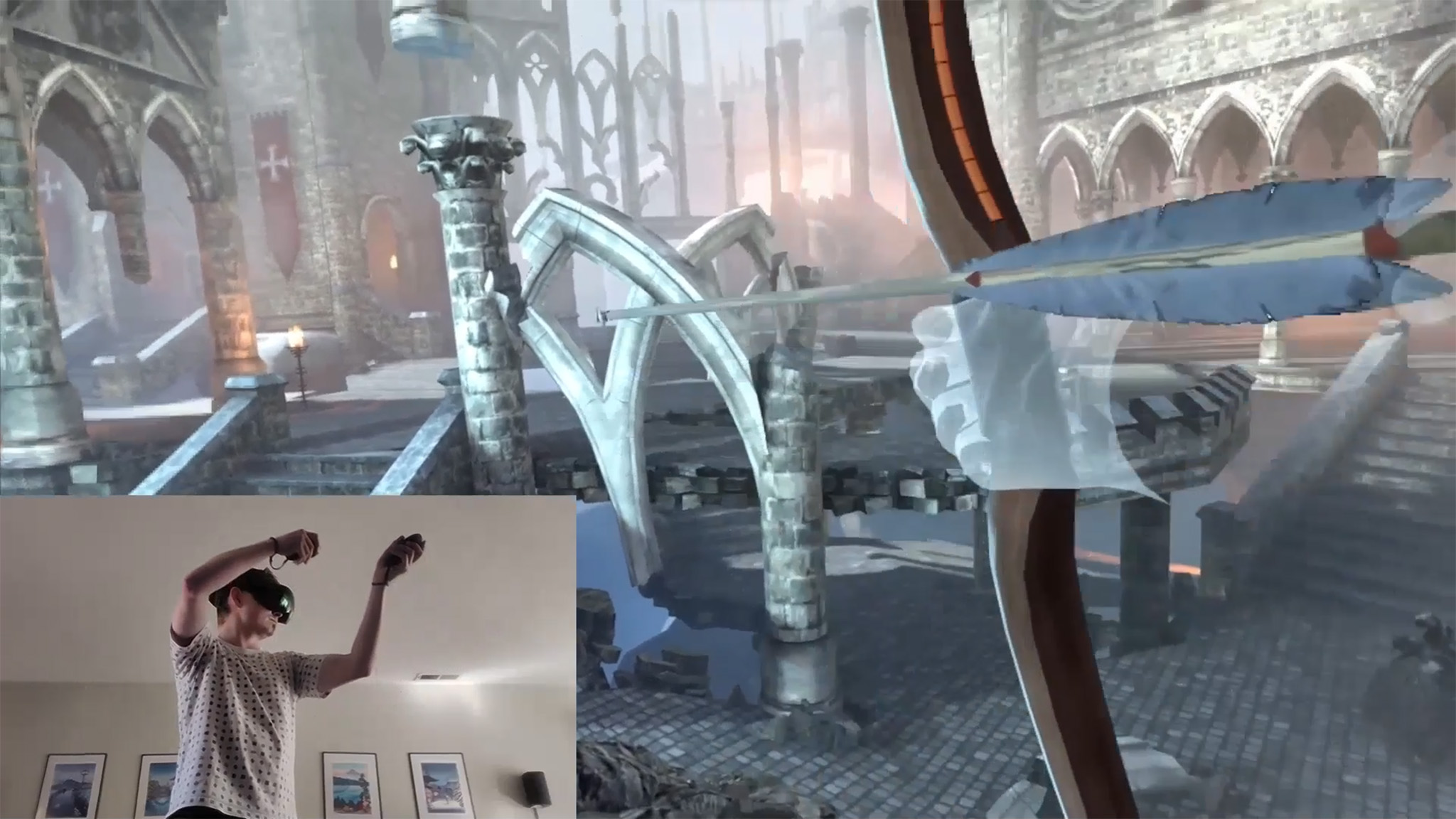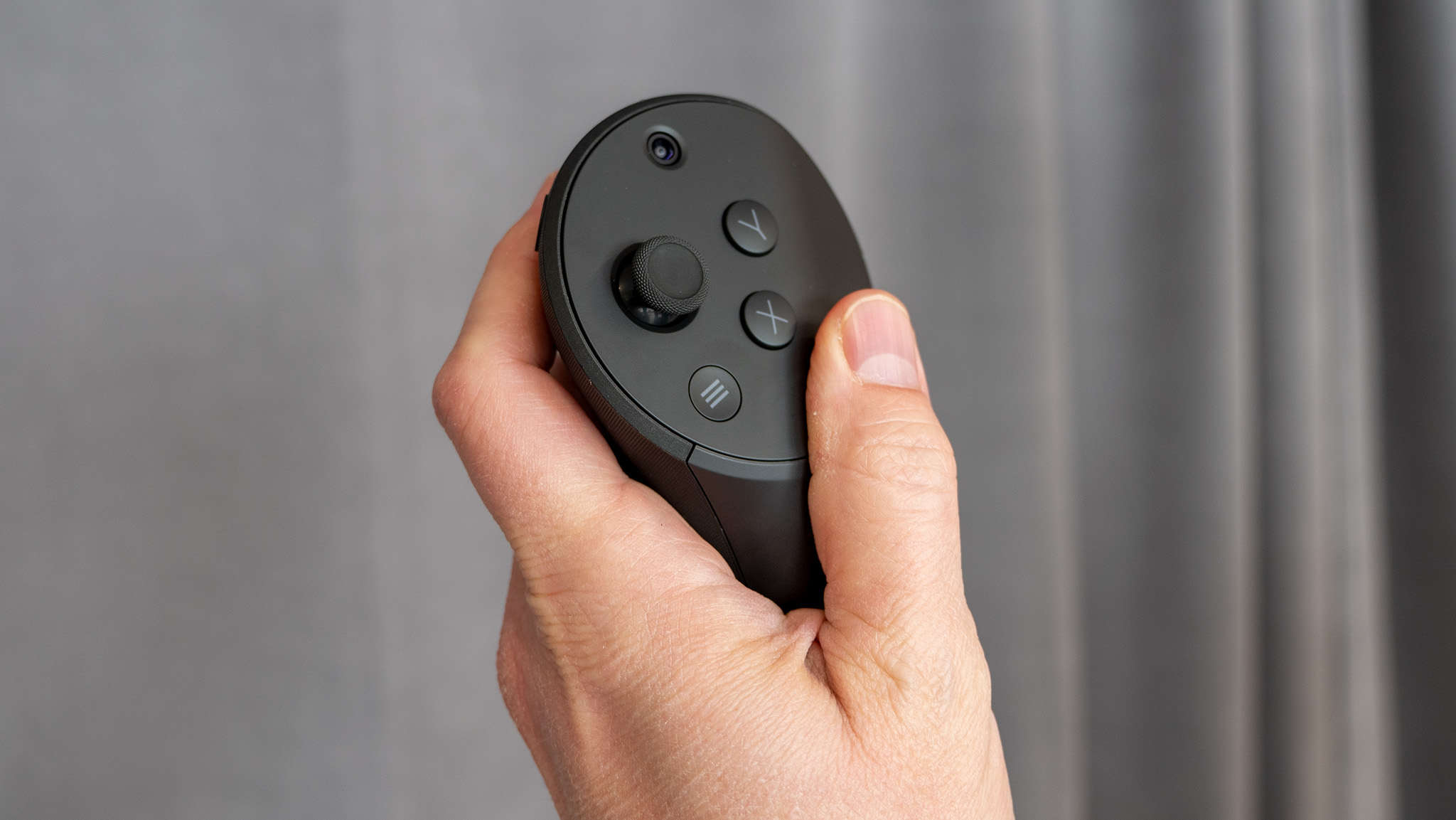Why the Quest Pro controllers are so much better
It's all about controller tracking.

While the Meta Quest Pro's headset is the most obvious part of the upgrade, it's the Quest Touch Pro controllers that are the real star of the show for VR gamers. That's because these controllers are totally self-tracked and don't need to be seen by the headset to be tracked in VR.
The Meta Quest Pro might be a $1,500 monster of a VR headset, but its controllers can be bought separately and used with the Oculus Quest 2. But should you upgrade for a whopping $300? I used both the Quest Pro and Quest 2 controllers in the popular archery game In Death: Unchained to test the differences and came away as impressed as I expected with the Quest Pro's improved tracking capabilities.
I specifically chose an archery game because, when nocking an arrow, the hand that holds the arrow either passes under the chin or goes behind the head by way of the side of the head. Either way, the headset cannot see controllers that are blocked by a human head which, on the Quest 2, results in the controllers getting "lost."
Meta and the developers of In Death: Unchained have programmed scenarios around keeping the controllers from getting lost — in short, the system knows you were pulling the controller back, even if it can't actively see it — but things change the moment you start moving your hand in another direction again.
In the video above, you'll see this effect in action. I begin the video by showing how an arrow should look and feel when nocked in VR using the Quest Pro. It's followed by the Quest 2, which exhibits the behavior I described above. The moment I start to push the arrow back forward, there's a very obvious delay that's felt in VR, although it's not nearly as obvious in the video as it was to me in person.
Now, in a game like In Death: Unchained, there is no scenario where you'll be pushing an arrow back through the bow. Rather, you'll pull it back and let go of your fingers to let the arrow fly, which helps negate this obvious design flaw in the Quest 2's controller tracking.
But that's exactly why there's a part two to this video! If I put the bow to the side of my face and pull the arrow back, the bow itself starts to turn on the Quest 2. That's because, again, the Quest 2 loses sight of the controller once it gets past the side of my head and only has the internal sensors in the Quest 2's controller to go off of.
Be an expert in 5 minutes
Get the latest news from Android Central, your trusted companion in the world of Android
This results in the bow tilting unnaturally because the system thinks I might be pulling the controller in that direction. This is despite my left hand never moving or tilting at all since all the aiming is done in-game via the hand with the arrow.

Meanwhile, since the Quest Touch Pro controllers are self-tracked via three cameras on the controllers themselves, there's no risk of this problem ever occurring. Pulling the arrow back at any angle results in a straight pull-back with no strange bow tilting or rotating.
Likewise, games that use on-body inventory systems — particularly games with backpack inventory systems or anything that's slightly out of view of the Quest headset — will work far better with the Quest Touch Pro controllers.
There's no telling if the Quest 3's controllers will use similar technology as the Quest Pro, but, more than likely, Meta will continue to use controller tracking similar to the Quest 2 in order to keep costs down. After all, it's estimated that the Quest 3 will cost between $300 and $500 when it launches near the end of 2023.

